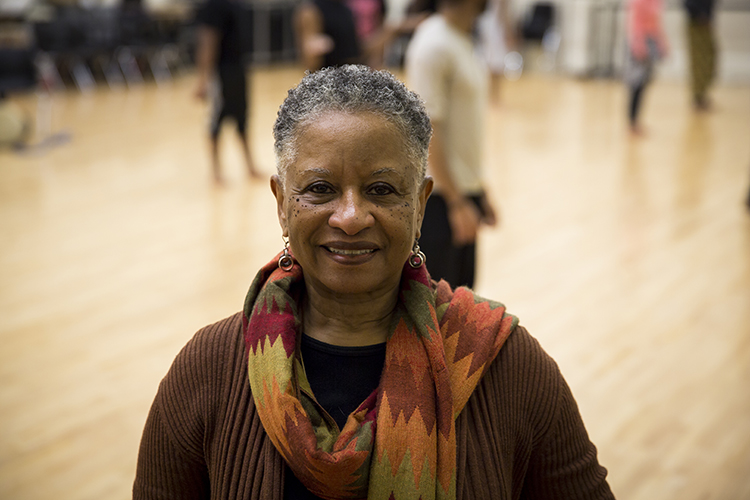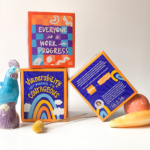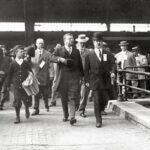The story of African peoples and their passage into the New World is embedded in dance. Slaves from Sierra Leone, Ghana, Guinea, Liberia, Senegal and other West African nations brought their music and dances through the Middle Passage to the New World.
History and culture were preserved in that music and dance, said Ferne Y. Caulker Bronson, professor of dance and director of the African Diaspora Track for dance and choreography majors in the Peck School of the Arts at the University of Wisconsin-Milwaukee.
“It’s not just about dancing…it’s about exploring an aesthetic that is very, very old, that has influenced the whole planet. The migration of enslaved Africans changed the aesthetic in those places where they went. Dance in America would not be what it is if it were not for the African influence.”
Caulker Bronson, who will be retiring in May, has shared her knowledge of and passion for African dance for more than 40 years through performances, teaching and research.
“Winterdances 2016: Evolve As We Enter,” Feb. 4-7 at UWM, features work by guest choreographers Amaniyea Payne (artistic director of Muntu Dance Theatre of Chicago), Debra Loewen (artistic director of Wild Space Dance Company and lecturer in the Department of Dance), Melinda Jean Myers (former company member of Trisha Brown Dance Company), and the Peck School’s Maria Gillespie, an assistant professor, and Senior Lecturer Dani Kuepper.
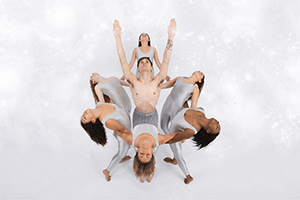
Caulker Bronson has helped cement UWM’s reputation as a leader in teaching and performing African dance. Milwaukee’s Ko-Thi Dance Company, which she founded in 1969, partners closely with the Peck School and is currently based at UWM. The university’s pioneering work in teaching and performing the dances of Africa and the Diaspora was featured in Dance Magazine in the summer of 2015.
Desmond Cotton, who graduated from UWM in December 2015, took African dance classes as part of his contemporary dance major. The tie to his heritage was one factor in choosing those classes.
“I really enjoyed being able to experience the freedom of motion and the call-and-response format. I read a lot about the art form and the history. It really contributed to my knowledge of the dance and the history.”
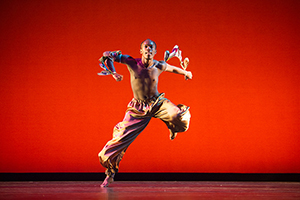
UWM’s African dance program grew out of Caulker Bronson’s work with Ko-Thi. She was teaching a popular class on African dance part-time as a lecturer in the university’s Africology Department when the dance department invited her to move the class into that area. She became an assistant professor in what was then the Department of Theatre and Dance in 1977. In 1994, she received a three-month Fulbright fellowship to study in Tanzania, East Africa. That gave her the opportunity and time to research and begin to build an academic program that incorporated not only dance movements, but history, culture and the work of pioneering African-American choreographers like Katherine Dunham and Pearl Primus.
With more than 2,000 ethnic groups with their own dances on the African continent alone, Caulker Bronson said there was plenty of material to work with. The history courses she developed trace the paths that African dance travelled to the New World and blended with European and indigenous forms. Recent dance graduate Karlies Kelley, for example, discovered and researched the history of the Cimarrons, a group of slaves who broke free from the Spanish and settled in her native Panama.
“We can go to Haiti, look at Haitian dance forms tracing them back to Dahomey [an African Kingdom located in the area of the present-day country of Benin],” said Caulker Bronson. “We can go to Brazil look at Capoeira and trace that back to Angola.”
Cultures met and mixed through dance.
“When you talk about American tap, for example,” Caulker Bronson continued, “it’s an American indigenous form that is a combination of two ethnic groups that were marginalized, the Irish culture with its clog dancing, and the African culture. Those two coming together created this amazing American form. Without Irish and Africans, there would never be an American tap.”
In a similar mixing of diverse dance cultures, the Winterdances finale brings together dancers from all different Peck dance tracks in a performance that focuses on the African Diaspora. Choreographer Payne, for example, incorporated beginning African dance steps to make her piece work for all dancers and selected a young white male with ballet training for a lead role.
That’s very much in keeping with Caulker Bronson’s philosophy of exploring diverse cultures through dance. “My philosophy as a teacher has been to encourage students to explore with genuine curiosity. That is key to understanding each other’s religions, history, culture and practices.”
